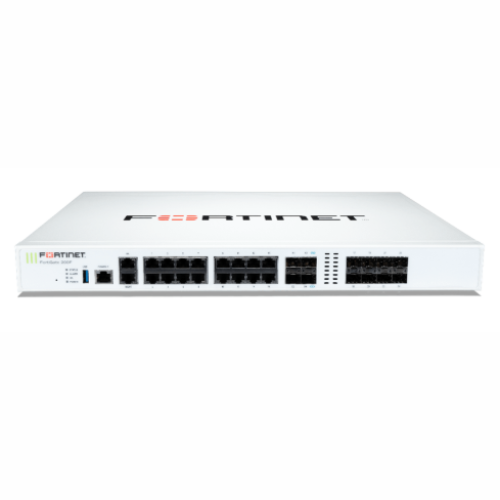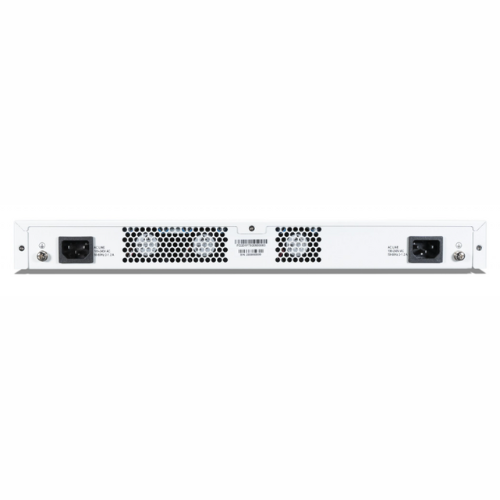

Product Overview
Fortinet FortiGate 200F is an efficient next-generation firewall (NGFW) and Secure SD-WAN product that is capable of meeting the requirements of medium-sized and large-scale companies. The 200F proves to be of great value because it is constructed using the custom Security Processing Unit (SPU) of Fortinet, thereby supporting high throughput, low-latency, and high-security services without affecting the network performance.
The FG-200F is ideal as a distributed office, campus network, or enterprise data center device, as it takes the typical functions of threat protection, SSL inspection, application control, and VPN connectivity and puts them all in one compact device. It has a rich mix of copper and fiber interfaces in addition to the 10GE SFP+ uplinks, which make it flexible to meet the needs of the current hybrid network.
Key Features and Benefits
-
Excellent Visibility of Encrypted Traffic: Provides industry-leading SSL/TLS throughput, allowing enterprises to maintain maximum visibility into encrypted traffic and identify threats more effectively.
-
Secure SD-WAN Integration: Packs in the opportunities of optimization of traffic across several links within a WAN by directing traffic to applications based on intelligent steering mechanisms, centralizes its administration, and implements policies across both branch and campus traffic across applications.
-
Scalable Connectivity: Offers 18 GE RJ-45 ports, 8 GE SFP slots, and 4 SFP+ 10GE ports to support a broad range of uplink, LAN, and WAN applications.
-
Advanced Threat Protection: provides IPS, malware protection, web filtering, and application control along with FortiGuard subscription services, and bundles them to give complete protection.
-
Consistent VPN Performance: Supports up to 13 Gbps IPsec throughput that enables secure and high-speed connections to remote users and to remote branches.
-
Enterprise-Grade Capacity: Has the capacity to support up to 3 million simultaneous connections and 280,000 new connections per second, and can thus be used in high-traffic environments.
-
Small and Simple: It is cost-efficient and data center-friendly, featuring a 1RU rack-like enclosure with low power consumption (approximately 119 W).
Technical Specifications
|
Feature |
Specification |
|
Firewall Throughput |
Up to 27 Gbps (UDP, 1518-byte packets) |
|
IPS Throughput |
~5 Gbps (enterprise mix) |
|
NGFW Throughput |
~3.5 Gbps |
|
Threat Protection Throughput |
~3 Gbps |
|
IPsec VPN Throughput |
~13 Gbps |
|
SSL-VPN Throughput |
~2 Gbps |
|
Concurrent Sessions |
~3 million TCP sessions |
|
New Sessions per Second |
~280,000 |
|
SSL Inspection Throughput |
~3–4 Gbps (HTTPS traffic) |
|
Interfaces (Copper) |
18 × GE RJ-45 (includes 1 management, 1 HA, 16 switch/LAN ports) |
|
Interfaces (Fiber) |
8 × GE SFP slots |
|
10GE Ports |
4 × SFP+ 10GE |
|
Form Factor |
1 RU rack-mount |
|
Dimensions (H × W × D) |
44 × 432 × 342 mm (1.73 × 17 × 13.46 in) |
|
Power Consumption |
~118.9 W (average) |
|
Input Power |
100–240V AC, 50–60 Hz |
Product Information
The FortiGate 200F is designed to meet the demands of contemporary hybrid enterprises in terms of their security and performance requirements. It offers organizations a chance to streamline and secure their networks by incorporating a high-capacity firewall, greater threat intelligence, and built-in SD-WAN.
The hardware power it provides is a critical service, including deep packet inspection, encryption, and decryption of SSL packets, as well as encryption and decryption of VPN packets, all at wire speed, even when critically load-balanced. The broad selection of interface options in the appliance (such as copper, fiber, and 10-gigabit uplinks) provides flexibility in the configuration of a wide variety of infrastructures.
The FortiGate 200F is specifically suitable for the usage of the branch aggregation, edge of enterprise, and campus core applications due to millions of parallel sessions and multi-gigabit throughput in the firewall, IPS, and VPN services. It is a low-power, rack-mount device that is small and can be used in organizations that require the integration of network functions and to minimize the cost of operation


